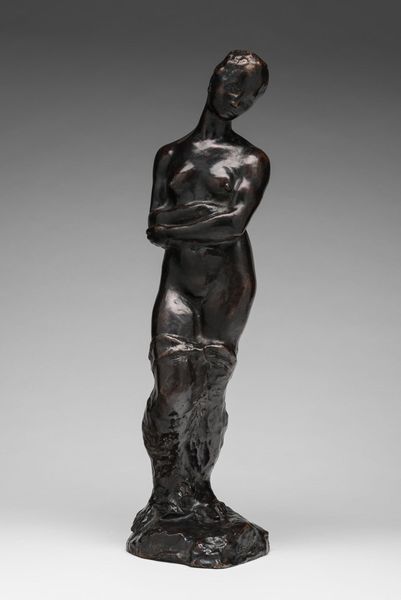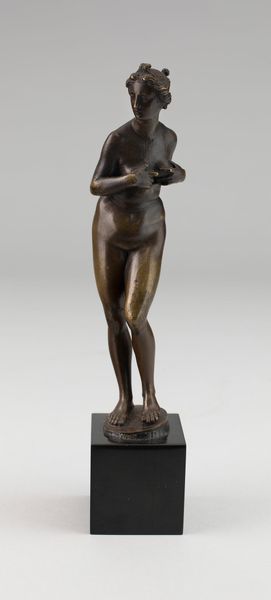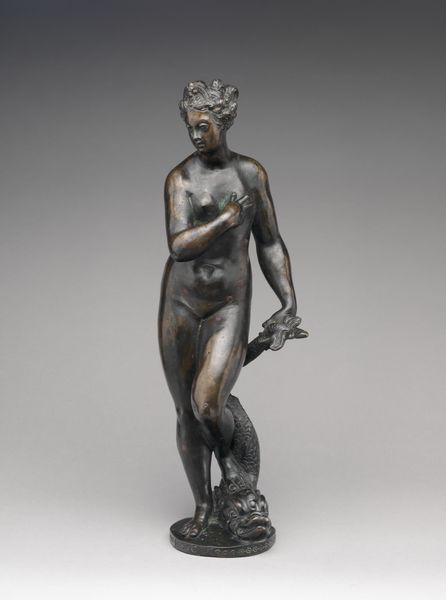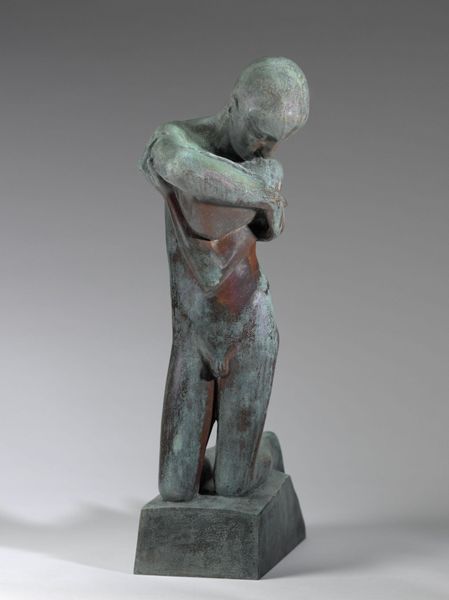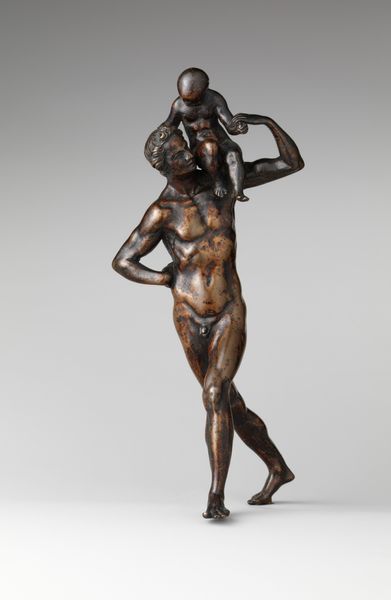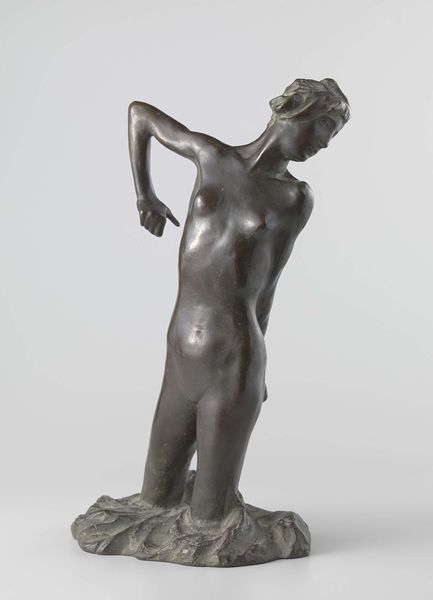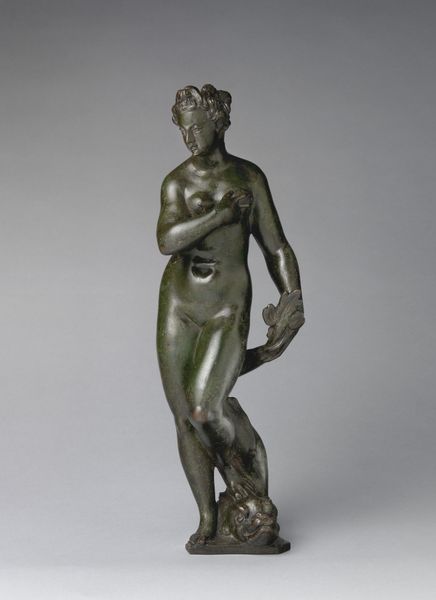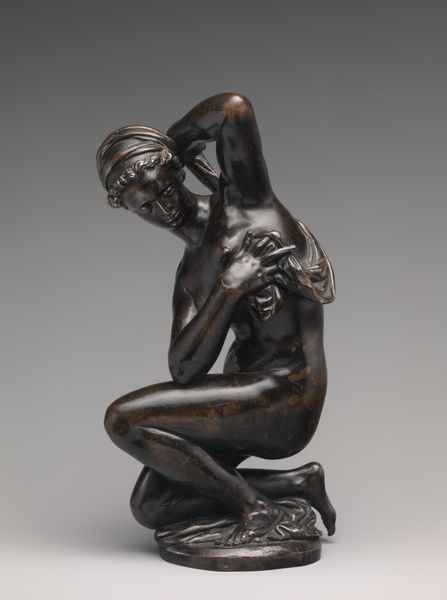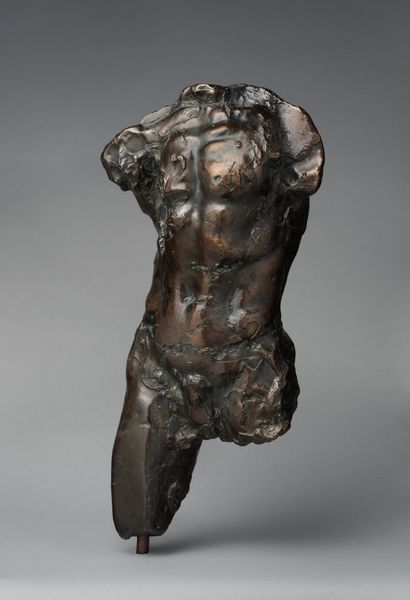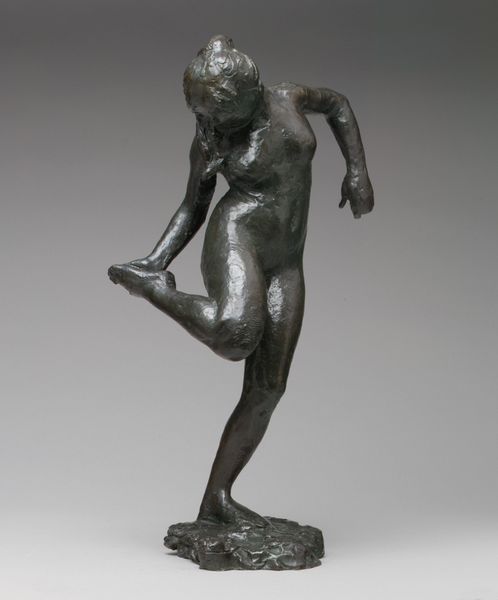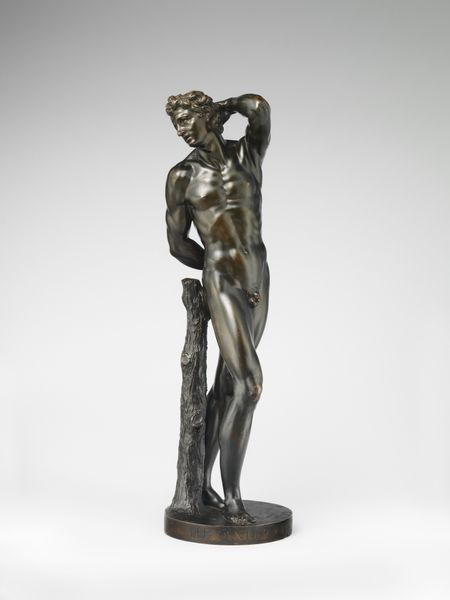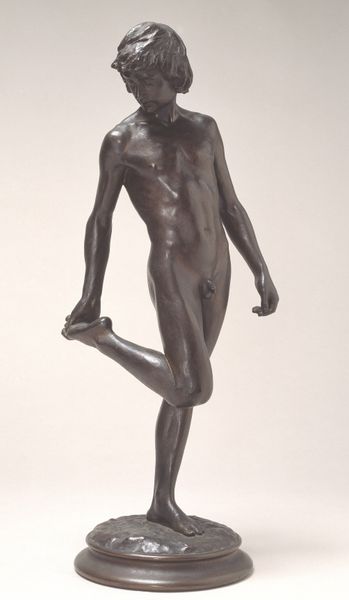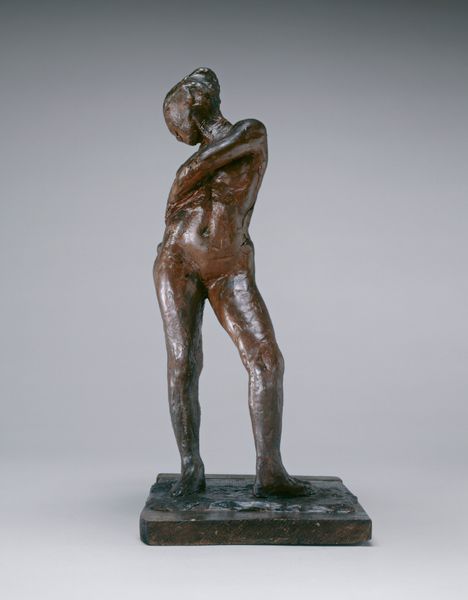
Dimensions: Overall (wt. confirmed): 68 1/2 × 20 1/2 × 23 1/2 in., 635 lb. (174 × 52.1 × 59.7 cm, 288 kg)
Copyright: Public Domain
Curator: Here we have Auguste Rodin’s "Eve," a bronze sculpture conceived between 1881 and 1910. It’s currently held at the Metropolitan Museum of Art. Editor: There's a chilling sense of vulnerability that hits you immediately. She seems to be cowering, shielding herself with her arms. It’s heavy...raw. Curator: Indeed. The figure's posture conveys deep shame, referencing Eve's transgression and the ensuing fall from grace. Note the head tilted downwards, the eyes hidden— classic visual cues of remorse. Editor: That bronze casting though! It shows such a clear engagement with materiality. Look at the way Rodin worked the surface. It isn't polished smooth; it has this rough texture that almost looks like she's emerging from raw earth itself. It reflects the process and physicality. Curator: The symbolism goes further. The pose itself is contorted, symbolizing internal conflict and a rupture in her identity. We see this mirroring the artistic transition to Symbolism as an embrace of emotion and subjective realities over objective ideals. Editor: It's powerful, but the Romantic undercurrent also interests me. The work clearly glorifies labor and how form takes shape from physical, strenuous, action, even if that form ends up conveying tragedy. Curator: That glorification transforms Eve into more than a representation of feminine failing; she embodies struggle itself, her posture echoed in so many depictions of guilt or grief throughout history. It also underscores the transition into decorative art. The nude takes center stage. Editor: Ultimately, examining the labor Rodin put into the surface is fascinating, isn't it? It allows a richer perspective, not just on skill and style, but on his era's preoccupation with nature, emotion, and labor's contribution. Curator: A testament to Rodin’s exploration of the human condition, rendering biblical narrative into universal feelings of regret and sorrow. Editor: I walk away from this piece sensing the weight and physical manipulation behind its construction and its continued relevance. I'd be keen to touch it and reflect further on what physical labors contributed to it all.
Comments
No comments
Be the first to comment and join the conversation on the ultimate creative platform.
